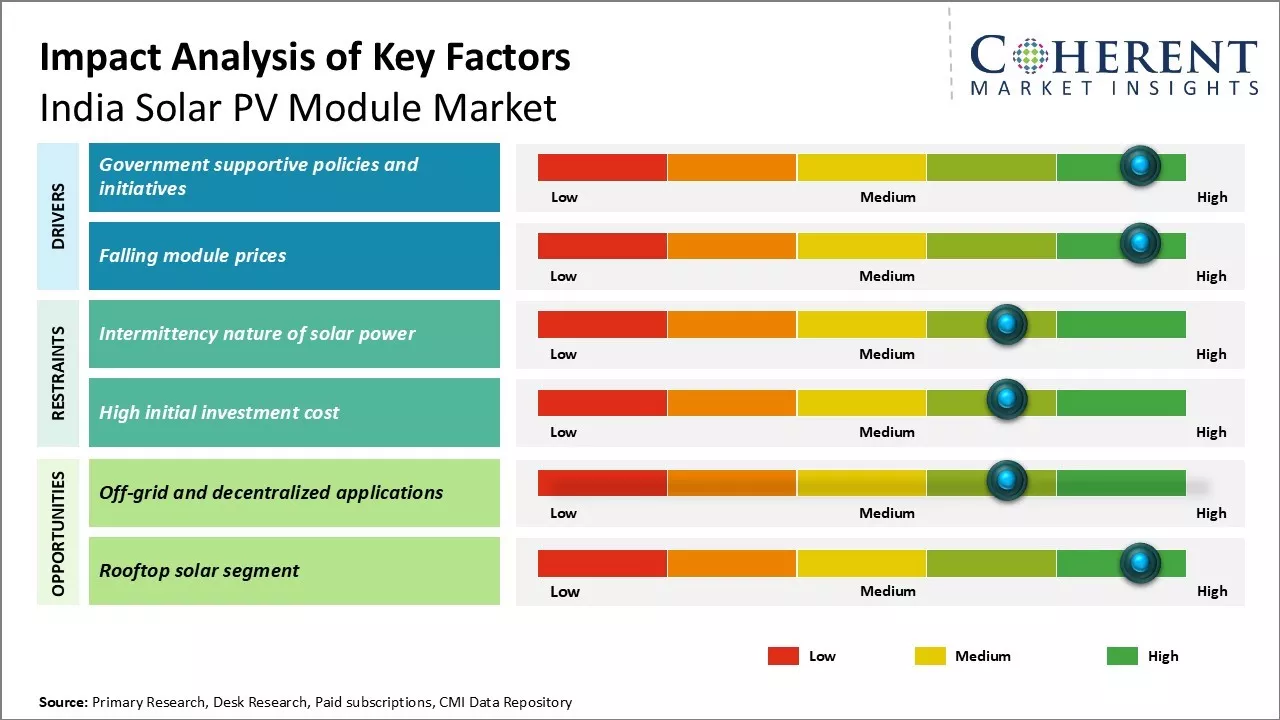India solar PV module market is estimated to be valued at USD 8.83 Bn in 2025 and is expected to reach USD 16.90 Bn by 2032, exhibiting a compound annual growth rate (CAGR) of 9.7% from 2025 to 2032.

To learn more about this report, Request sample copy
The government of India has set an ambitious target of producing 450GW of renewable energy by 2030, and this boosts investments in solar projects. Favorable net-metering policies and tax incentives for residential solar installations have boosted demand from the rooftop solar segment. Low module prices and continuous technological advancements makes solar energy more accessible and cost-effective as compared to traditional energy sources. The interest of major global module manufacturers to increase production capacity in India can drive the market growth
Market Driver - Government supportive policies and initiatives
Indian government focuses on accelerating the development of renewable energy sources. With growing concerns around energy security and environmental degradation caused by excessive dependence on fossil fuels, the leadership recognizes solar as a vital avenue to address the twin challenges of ensuring adequate power availability as well as reducing carbon footprint. Favorable policies and programs rolled out in the last few years have incentivized investments and enhanced uptake of solar power technologies.
Jawaharlal Nehru National Solar Mission was launched in 2010 with an ambitious goal of deploying 20 GW of grid-connected solar power by 2022. This provided the much-needed impetus to solar entrepreneurs and manufacturers to gear up and participate in this new sunrise sector. The target has been achieved well ahead of schedule and stands revised to 100 GW. Introduction of auctions or competitive bidding for large utility-scale projects can also drive the market growth. The e-reverse auction mechanism has significantly lowered the prices at which projects are awarded to developers, making solar energy more cost-competitive against conventional sources. Multiple states have followed this model to meet their renewable purchase obligations at economical tariffs.
The government is promoting rooftop solar schemes to encourage installations at the residential and commercial levels. Capital subsidies under the MNRE's rooftop program have stimulated small-scale adoption. Recently introduced provisions like net-metering further strengthen the business case for households and industrial/commercial establishments to install solar PV systems. Favorable policies such as accelerated depreciation, generation-based incentives, and tax exemptions increases the appeal of localization, and indigenous manufacturing of solar panels, and related components. The production linked incentive scheme is aimed at boosting domestic production capabilities.
The government's firm policy resolves and follow up actions have generated a thriving market ecosystem for solar PV modules and related products. Both the large-scale utility segments as well as the decentralized rooftop market segments witness high growth rates. The policy environment is conducive for sustained capacity expansions by developers and technology providers due to medium to long term government targets. Supportive policies and programs at central and state levels can drive the India solar PV module market growth.
Joining thousands of companies around the world committed to making the Excellent Business Solutions.
View All Our Clients